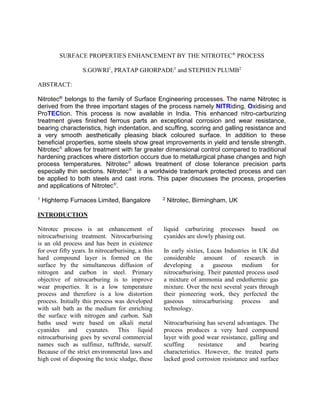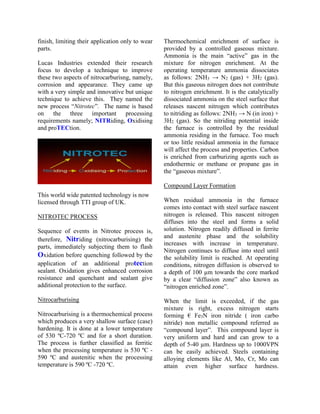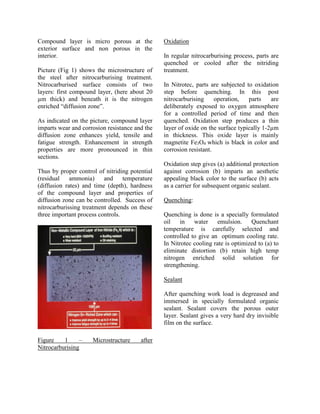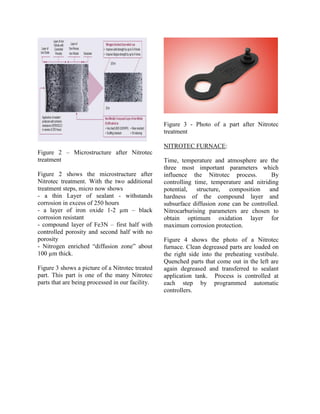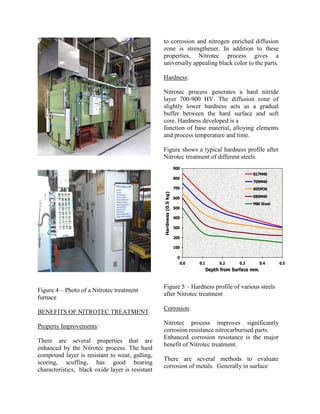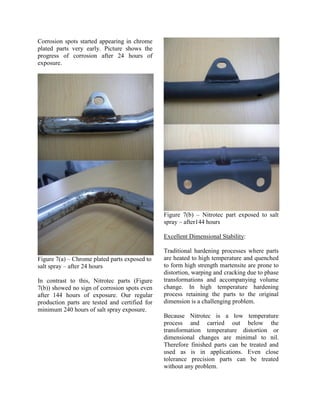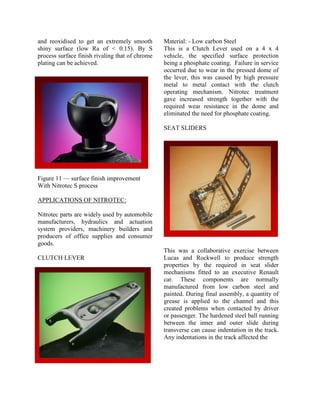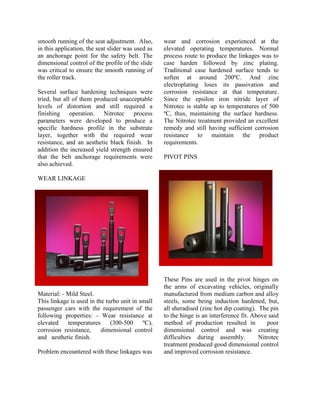Nitrotec is an enhanced nitrocarburizing surface treatment that provides parts with exceptional corrosion and wear resistance. The process involves three key steps: 1) nitrocarburizing the part to form a hard compound layer, 2) flash oxidizing the surface to enhance corrosion resistance and impart a black color, and 3) applying a protective sealant. This produces a treated surface with a hard nitride layer, a thin corrosion-resistant oxide layer, and a sealed porous outer layer for enhanced properties and minimal distortion compared to other hardening treatments.
